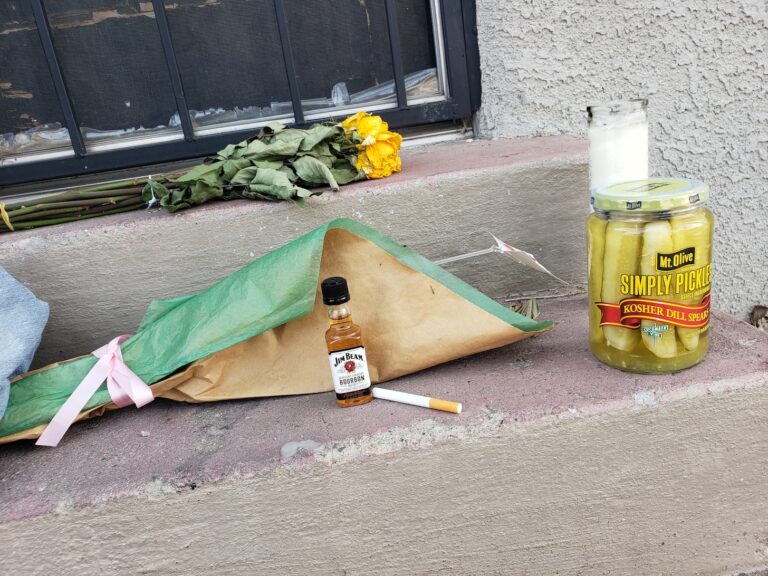A lot of time has gone by since those heady days. The pendulum of relevancy in education has swung back and forth—several times—in the intervening decades. But in recent weeks I've learned from two different groups of Albuquerque high school students that the essential need to make a fit between what goes on inside and outside of the classroom is as strong as it was in my day.
I started serving in the New Mexico Legislature last month. Even before I went up to Santa Fe, a class of students at Robert F. Kennedy Charter School contacted me about their interest in introducing a memorial based on work they'd done concerning the incredible epidemic of murders of young women in Juarez.
That first meeting convinced me that these young men and women were serious. This wasn't some lark, some “project” that would be forgotten as soon as the final grade was posted. Their hearts had been touched by what they'd learned and they were intent on using that anger to produce change.
That kind of passion is rarely kindled by books. And this hadn't been, either, though they'd done some good online and library research. Mostly, though, their teachers had helped them by introducing them to some of the young men and women who came through Albuquerque last fall, part of the national caravan heading for the Border at El Paso. That campaign's mission was to enlighten Americans about what had been happening for a decade in Juarez … and why.
In late January I met a second class that had been working on the same issue. This one was at Highland High School, a class of English as Second Language (ESL) students whose instructor was inspired to introduce the disappearances into classroom discussion in his search to find topics that students could talk about—in English and in Spanish.
He learned that there were actually students in the class who counted relatives among the victims, including one whose sister had been found killed near Juarez. From the discussions he learned there are actually many people in Albuquerque with a personal relationship to the murders. For them it was not a fascinating whodunit for intellectual teasing, but pain so keen they could barely give it words.
The Highland instructor knows the one at Robert F. Kennedy. They talked. He learned of the legislative memorial her students were planning. He asked if his students might join in the project. She agreed. The students met on weekends. They pooled their information.
The Highland students are convinced that the Juarez police are involved in the murders. The RFK students told me that the dozens of maquiladoras that draw thousands of impoverished men and women to la frontera in hopes of finding employment are somehow implicated as well.
Many victims were students in classes at the cut-rate, privately operated computer schools that make money off the immigrants by teaching the rudiments of basic software programs, skills they are told will make them more attractive to the maquilas.
And apparently the factories have policies that expose their female employees to predatory thrill-killers: They expect their workforce to transport itself to the job instead of providing chaperoned buses and they typically “lock-out” workers who arrive tardy.
It is clearly a far-more complex problem than simply identifying a handful of serial murderers who can be locked up, thereby restoring community security, the way it's done in the movies. This is uglier, more corrupt than that.
These murders often involve rapes and evidence of rituals or “group parties.” The investigations have been shamelessly superficial and are trusted by no one. The prosecutions have been laughable—or completely arbitrary. The coverup has lasted for a decade. The occasional probing reporter who tries to get close to the truth is silenced.
Now our own New Mexico police agencies are getting involved. They are supposedly training Mexican law enforcement officers—the very group (if the widely-held suspicion is true) who are in this mess (as perpetrators) right up to their shoulder holsters. Training them to do what? Turn themselves in? Catch their superior officers?
I wish that these 400 murders had gone unsolved because of poor police technique, but that's not too likely. Hell, even Inspector Clouseau tripped over a criminal once in a while. These guys in Juarez that we're training are supposedly in a zero for 400 slump, yet they're keeping their jobs.
The joint efforts of the two student groups have produced a Senate Memorial that I will introduce. I write about it because it concerns a significant crime and coverup happening practically on our doorstep, one with tentacles that enmesh New Mexico with its sister state of Chihuahua in a tight, very dark, embrace.
But I also want you to know that there are lots of young people in this city who are digging deeply into their own souls in order to try to right serious wrongs. It should give us all a little more optimism for the future to know that they care.
The opinions expressed are solely those of the writer.






